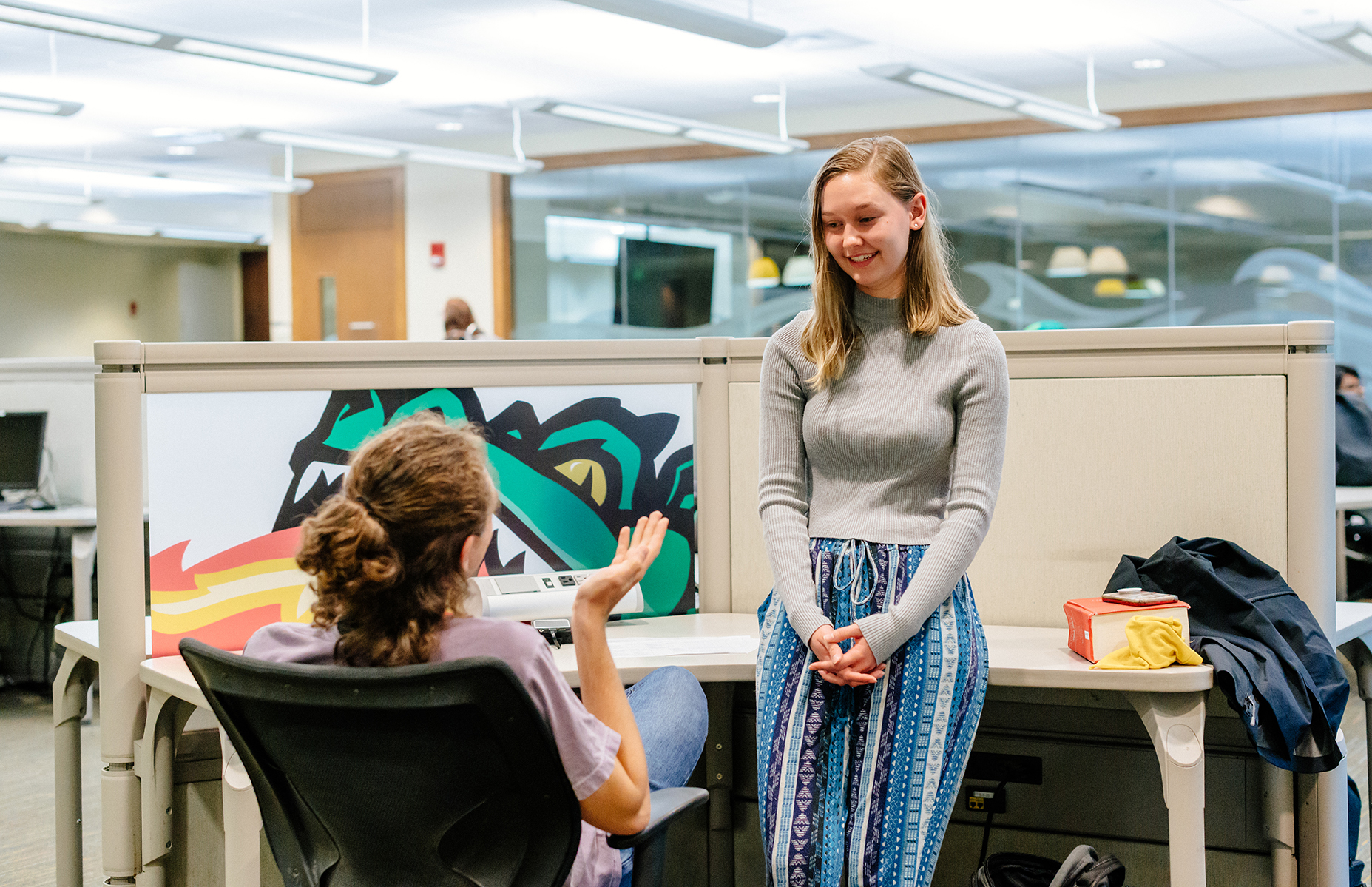
“You go into a library,” said novelist Ray Bradbury, “and you discover yourself.”
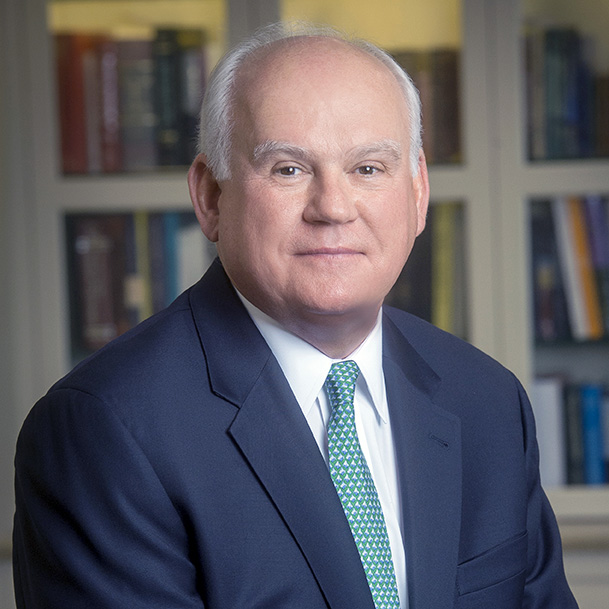 “UAB’s unprecedented growth and success are driven by strategic plans, and UAB Libraries’ plan is yielding excellent results.”
“UAB’s unprecedented growth and success are driven by strategic plans, and UAB Libraries’ plan is yielding excellent results.”
— UAB President Ray Watts Set foot in a UAB library and you will discover much more than that, thanks to UAB’s multimillion-dollar investments during the past several years to restructure Mervyn H. Sterne Library and the Lister Hill Library of the Health Sciences into 21st-century central hubs of learning activity on campus. More than $2 million has been invested in collections, resources and personnel; an additional $498,000 has been dedicated to physical renovations and improvements.
That commitment reinforced UAB Libraries’ focus on implementing its comprehensive strategic plan, adopted in 2015. Aligned with UAB’s institutional strategic plan, Forging the Future, the libraries’ plan aimed to merge the existing campus libraries into a single unit, acquire new software, enhance facilities and hire more student workers, all while remaining user-focused.
Many of those objectives had been completed by 2017; the two libraries were merged in 2015, and the university since has increased library funding for scholarly resources by 20%, added nine library faculty positions and increased student worker hiring by 300%. More than $800,000 has been invested during the past two years to provide more and better teaching and research resources on campus, based on 2017 recommendations from the Association of Southeastern Research Libraries (ASERL), which requires that specific standards be met for continued membership. UAB received confirmation in early 2019 that it meets those standards; other ASERL members include universities such as Duke and Emory.
“UAB’s unprecedented growth and success are driven by strategic plans, and UAB Libraries’ plan is yielding excellent results,” said UAB President Ray Watts. “The team in UAB Libraries — with the support of the Office of the Provost and others — has done a great job implementing a plan to make sure our students, faculty and staff have the benefits of 21st-century libraries that support positive results across all areas of our mission.”
A team effort
“The university’s investments over several years have funded some of UAB Libraries’ most exciting improvements,” said Pam Benoit, provost and senior vice president of Academic Affairs. Inside Sterne, specific and strategic physical renovations have helped the library become a hub for campus activity.
Sterne’s first floor was redesigned to create more student lounge and study spaces and to make the reference desk more visible and accessible, and a section of second-floor space was renovated to accommodate the UAB Office of Global Engagement, which includes INTO UAB and International Student and Scholar Services (ISSS). INTO UAB, an initiative begun in 2016, is a joint venture with INTO University Partnerships to increase the global diversity of UAB’s student body, expand global opportunities for its domestic students and faculty to pursue innovative teaching, research and service and further UAB’s commitment to its shared value of diversity and inclusiveness.
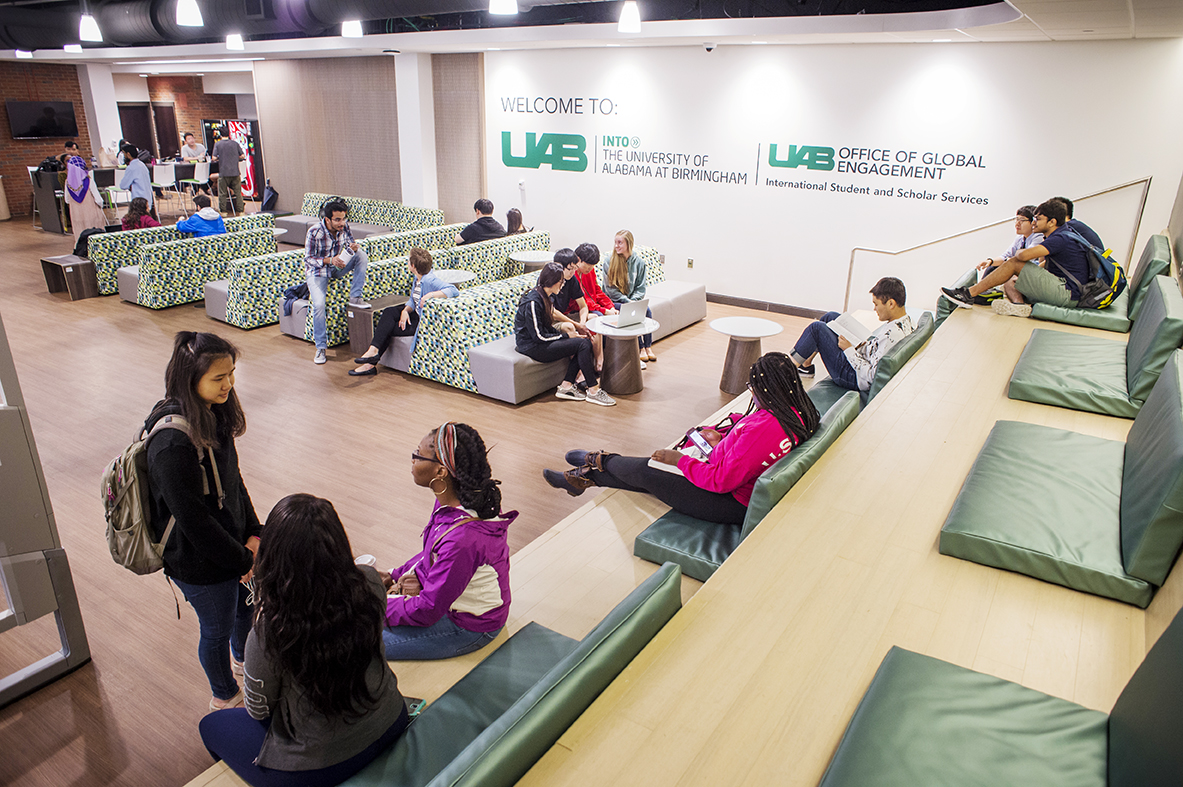 Because of financial support from INTO Giving, more than 50,000 young girls in eight developing countries will receive an education during the next three years.
Because of financial support from INTO Giving, more than 50,000 young girls in eight developing countries will receive an education during the next three years.
“Bringing INTO UAB and ISSS into Sterne has brought together so many different cultures and ideas into a single space, and the difference that has made at UAB is immeasurable,” said Suzanne Austin, Ph.D., senior vice provost and senior international officer. “INTO UAB and ISSS did not just make our campus libraries more student-oriented — they made us more globally oriented.”
During the past several years, 14 library group-study rooms have been added to campus. LHL more than doubled its number of group-study rooms, growing to 18 from seven, and Sterne added an additional three, totaling 32, aligning UAB Libraries with the university’s Quality Enhancement Plan, Learning in a Team Environment, which is designed to improve student learning experiences on campus, and with UAB’s strategic plan, Forging the Future, which aims to create environments and opportunities that facilitate collaboration and foster innovation.
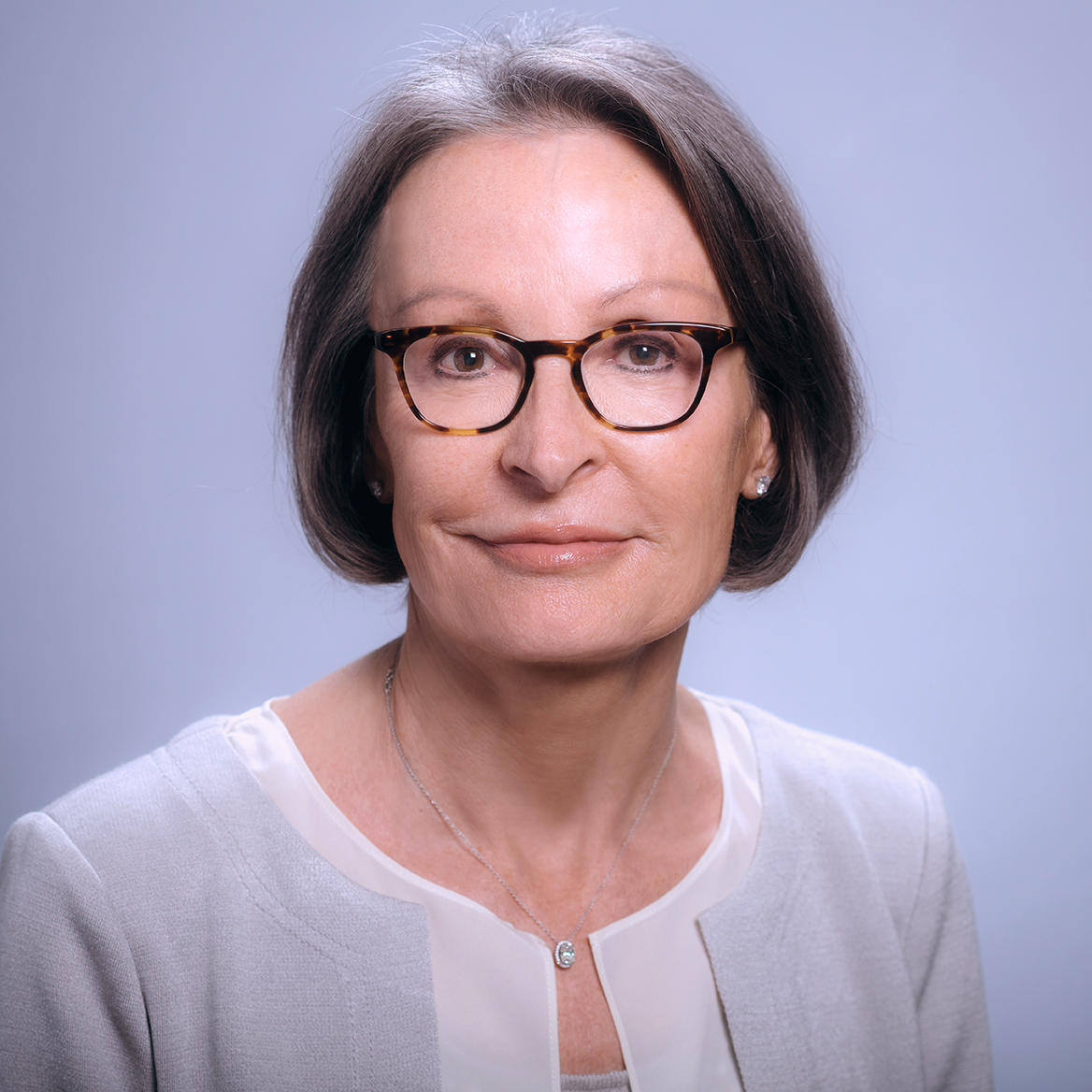 “Bringing INTO UAB and ISSS into Sterne has brought together so many different cultures and ideas into a single space, and the difference that has made at UAB is immeasurable."
“Bringing INTO UAB and ISSS into Sterne has brought together so many different cultures and ideas into a single space, and the difference that has made at UAB is immeasurable."
— Suzanne Austin, Ph.D., senior vice provost and senior international officerSingle-service one-stop concierge desks and digital signage also were added in both Sterne and LHL, and Sterne’s Room 163 was converted into an active-learning classroom focused on student-centered technological learning.
“Making UAB’s libraries student-oriented spaces has very much been a top priority for us,” Benoit said. “The library should be a destination on campus, whether that’s for individual- or group-learning opportunities or as a community space. These recent investments have made that possible.”
Ease of access
UAB has allocated a significant amount of funding to acquire easily accessible and comprehensive online resources. Two years ago, LHL’s and Sterne’s catalogs merged into a single cloud-based platform, enabling users to search all library resources without needing to log into different systems.
In 2016, UAB Libraries joined the Center for Research Libraries, in which member libraries’ collections hold approximately 5 million newspapers, journals, books, pamphlets, dissertations, archives, government publications and more. It also acquired free access to the engineering-, chemistry- and physics-focused Linda Hall Library, which holds more than 500,000 monograph volumes and 48,000 journals. UAB also recently added access to Elsevier, a major publisher of science, technology, engineering and mathematics literature and a world-leading provider that produces and controls 25% of the world’s science, technology, engineering and math literature. It publishes more than 2,500 journals and more than 33,000 book titles.
“The merger of the two libraries was a huge step forward for UAB,” said Jeff Graveline, associate dean for Research and Instructional Services for UAB Libraries, who has worked at UAB for 13 years. “We’re not standalone and siloed anymore, and it allowed us to merge our technologies together.
“Twenty-first-century libraries meet the needs of 21st-century students,” Graveline continued. “Libraries have become more and more digital, and to meet those needs we’ve expanded our digital holdings. People have access to more content right at their desks.”


1977 photo of Mervyn H. Sterne Library courtesy of UAB Archives | See more at uab.edu/50
Developing information literacy
To better help users learn to access the host of available content to them through the library system, UAB’s librarians have also created more than 235 subject, course and how-to guides at guides.library.uab.edu, which can help students use the resources and services at UAB Libraries effectively. In 2018, the guides were viewed 155,000 times.
Victoria Dawkins, librarian for freshman composition and subject liaison for the departments of Art and Art History, Music and Philosophy, recently created the CAS Research Sources and Skills Toolkit, which helps students learn efficient research strategies to evaluate source material, appropriate techniques for documenting sources and more.
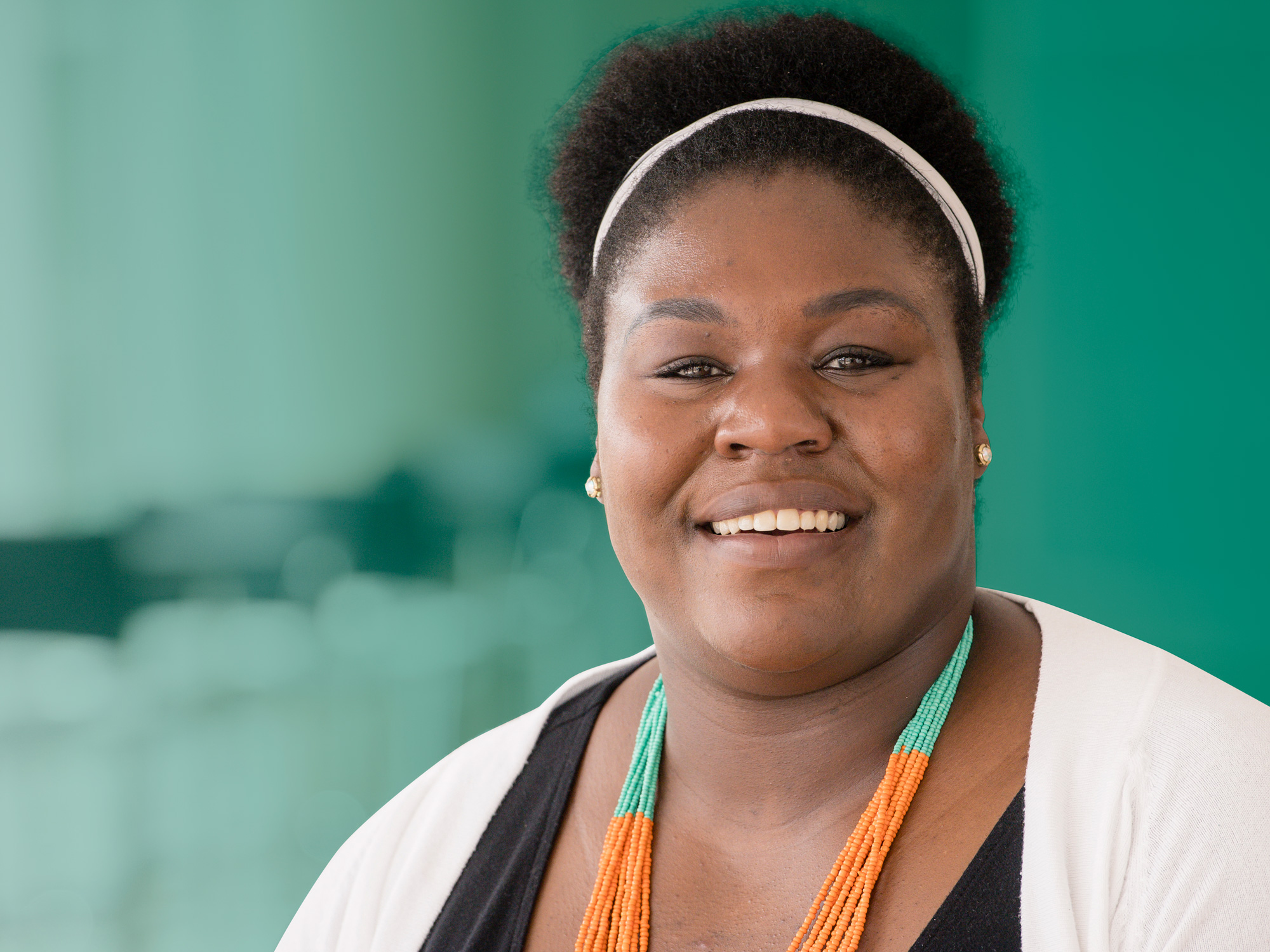
“Familiarity with informational literacy isn’t something that stops as soon as you graduate. It’s a lifelong-learning situation.
— Victoria Dawkins, librarian for freshman composition and subject liaison for Art and Art History, Music and Philosophy
Dawkins has worked at UAB for about two years but as a librarian for about a decade, and she had implemented an information literacy course similar to the toolkit at her previous institution. Dawkins’ position enables her to interact with many students, she says, and one of her goals is to help them understand how being able to locate, identify and understand correct information is applicable even outside of academia. She incorporated current events to give students reason to “sit up and pay attention” to the lessons, she says, touching on topics such as fake news.
“Familiarity with informational literacy isn’t something that stops as soon as you graduate,” Dawkins said. “It’s a lifelong learning situation. After you graduate, you should still be able to use those tools, resources and skills that you learned while in school. Companies are looking for employees who know how to tell the difference between a reputable website and one that isn’t, and the differences between popular resources such as blogs and more scholarly ones, such as census statistics.”
Delores Carlito, information literacy coordinator for UAB Libraries and the library liaison for the departments of English and Foreign Languages and Literatures, helped to create UAB’s course reserves program, in which course books owned by UAB Libraries can be placed on reserve for student access. The course reserves program alone saved students more than $23,500 on instructional materials in spring 2019, Carlito says. Faculty across UAB inspired by the shared value of stewardship have saved students more than $1.1 million on course materials through the Center for Teaching and Learning Affordable Instructional Materials (AIM) grant program by creating their own online assets in Canvas, used rental textbooks or older editions and identifying free online resources, many of which are available through UAB Libraries databases.
1971 photo of students in Mervyn H. Sterne Library courtesy of UAB Archives
Student successes
Justin Goebel, assistant professor in the School of Health Professions Department of Clinical and Diagnostic Sciences, saved his PA 609 students more than $5,000 during the summer semester by using a no-cost e-book available through UAB Libraries instead of a traditional paper textbook. Goebel recently joined the Clinical and Diagnostic Services faculty; because he began his career in clinical practice, he says he was not as familiar with the services UAB Libraries provide. He partnered with the School of Health Professions library liaison, Megan Bell, to make the e-book available for his students, and says he plans to continue using the book in future iterations of the course, including its predecessor, PA 608, compounding the savings to UAB students.
“Having been a student not that long ago, I remember how much everything costs, especially the really expensive textbooks,” Goebel said. “The library is extremely helpful in providing resources to students, and I try to emphasize that it’s not just a place to study — there are people in the libraries who are working to help you.”
Carlito echoed Goebel, saying that as libraries grow and modernize, they are becoming more oriented to student needs — more and more student Blazers are using Sterne, where Carlito works, as a gathering space.
“Sometimes they’re hanging out, sometimes they’re doing work collaboratively,” Carlito said. “Libraries used to be seen as just this quiet space, but not anymore. Our libraries are more than just warehouses of books. From my lens, we’re helping students learn about information — not just finding it but evaluating it.”
Jennifer Young, Ph.D., assistant professor in the Department of English, works closely with UAB Libraries, and Dawkins in particular, when teaching freshman composition courses. She says Dawkins and other UAB librarians work hard to partner with faculty across UAB to help students understand just how useful library resources can be when researching and writing assignments for class or doing research.
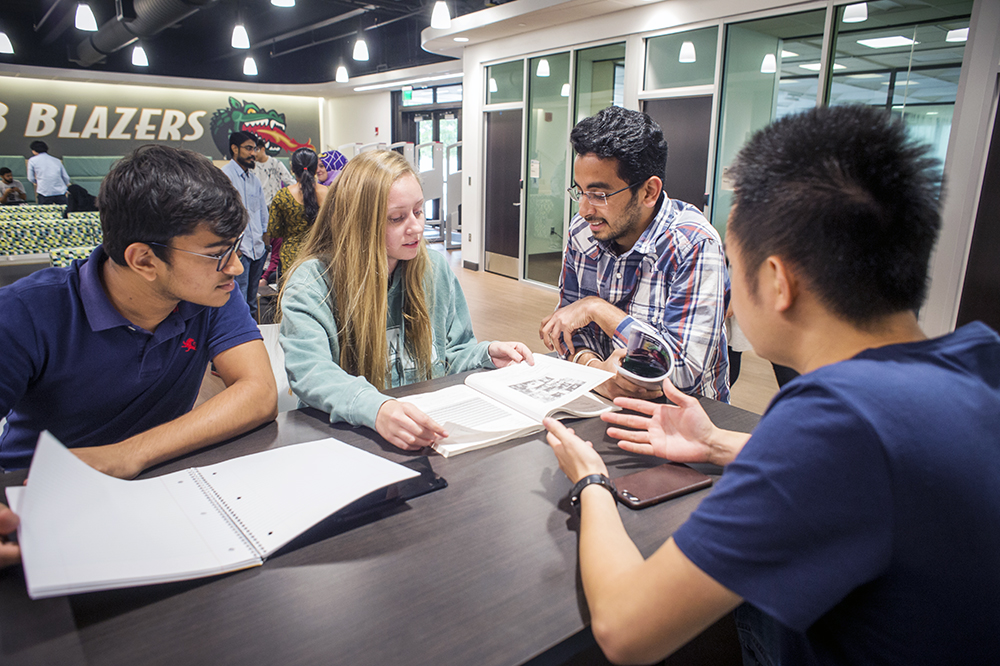
“Our partners in Sterne help teach students how to frame their searches and work within the system to find the results they need,” Young said. Her freshman composition students receive instruction from Dawkins on how to access databases and other digital resources.
“Our librarians are great for creating structures and resources for students to begin learning research skills,” Young continued. “In fact, as my students were getting ready to write their reflective papers this semester, several shared with me how much more comfortable they feel now when working with databases. That was music to my ears.”
Though much information is now accessible online, libraries as brick-and-mortar spaces are still important for campuses. UAB is no exception, Young says — especially with its emphasis on the current QEP, Learning in a Team Environment, which she has implemented in her own classes and has seen in action at Sterne specifically.
“Many of my students talk about going to the library and taking advantage of that space to collaborate and work through assignments,” she said.
Though she has worked at UAB for more than a decade, Young remembers time spent at other institutions where the library was not seen as a resource for faculty and students, because neither information nor library staff were readily available. That is not the case at UAB, she notes.
“The information libraries provide hasn’t changed — the ways we can access that information have changed,” Young continued. “We have accessibility now that we couldn’t dream of 15 or 20 years ago, and our librarians work incredibly hard to ensure we know what’s available.”
Librarians also conducted more than 700 hours of in-person instructional sessions with students, and use of the online Chat with a Librarian feature increased 50% from 2018 to 2019. Chat users had an average wait time of just 13 seconds for a response from a librarian.
“Libraries are more relevant now than ever,” Graveline said. “All the content people use to conduct their research, to do their schoolwork and projects — that comes from the library. We gather it, mediate it, curate it and put it out there for our students and faculty. While our libraries are changing, they’re still the heart of the university.”
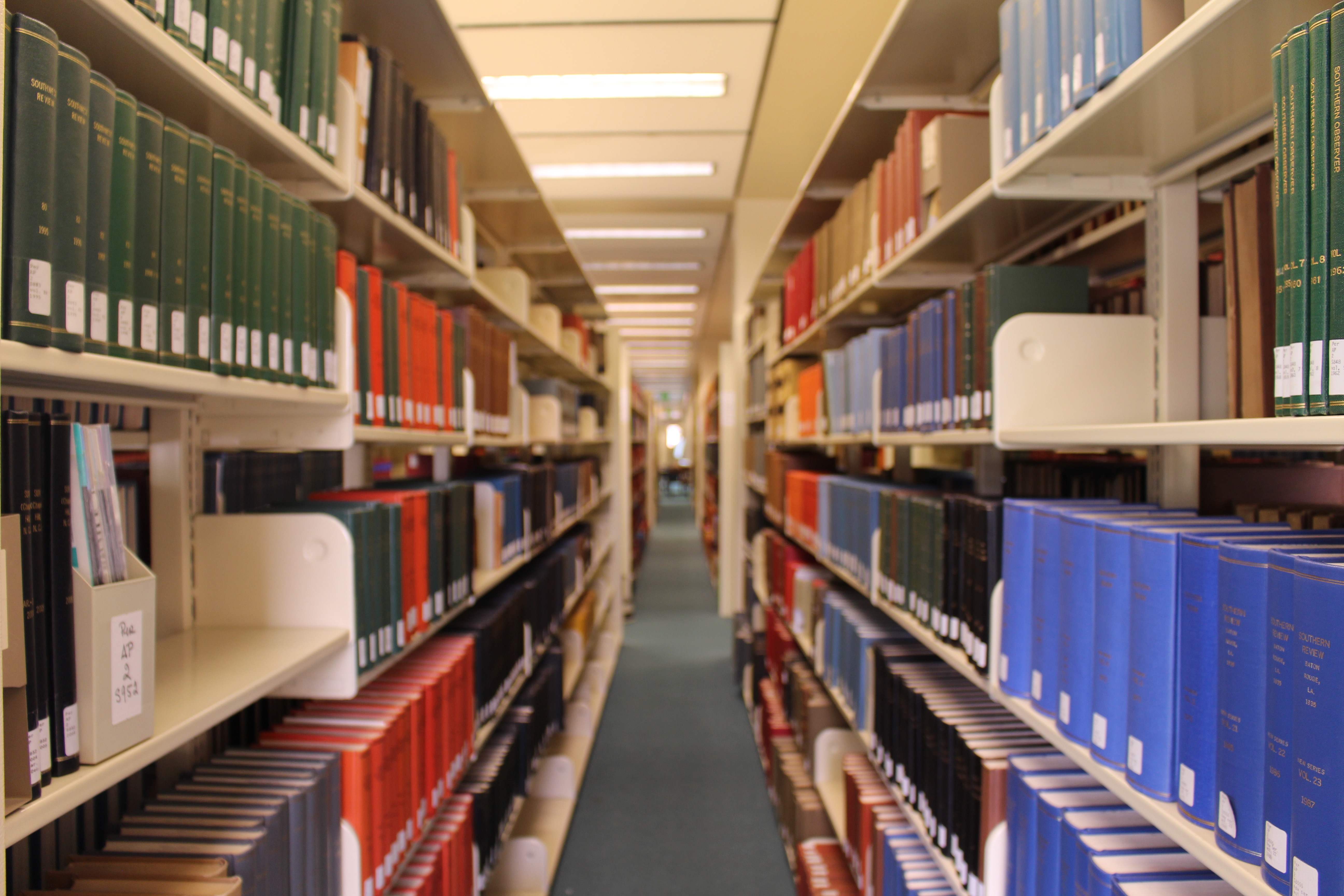 Sterne is still home to collections of stacks, as is the recently acquired 801 Building, which houses older print journal collections, microfilm, microfiche, music and spoken-word recordings.
Sterne is still home to collections of stacks, as is the recently acquired 801 Building, which houses older print journal collections, microfilm, microfiche, music and spoken-word recordings.
Connecting campus
Not all of UAB Libraries’ improvements have been digitally focused. In order to provide students and employees comprehensive access to less-frequently requested physical materials, UAB has moved items such as older print journal collections, microfilm, microfiche, music and spoken-word recordings into the recently acquired, 36,000-square-foot 801 Building at the corner of Fifth Avenue South and Eighth Street.
The 801 Building is staffed by library personnel and has parking available for visitors, and the library operates a courier service to transport materials to LHL or Sterne. UAB students and employees can search for items from the ONESearch PRIMO online catalog, request delivery to the library most convenient to them and later return the items to any library on campus.
“We’ve merged all our technology together,” Graveline said. “Before [the 2015 merger], we were running two separate library catalogs and websites. Now, we have one discovery system that searches across both Sterne and Lister Hill libraries, the UAB Archives and our Reynolds-Finley Historical Library. We have librarians from both libraries working together, helping to push ourselves forward.”
Library users also can access RapidILL, an unmediated interlibrary loan system introduced to UAB in October 2018 that guarantees access to requested available digital articles within 24 hours. More than 300 colleges and major research libraries use it — including other ASERL members. UAB has borrowed more than 6,500 articles from other RapidILL institutions in the past 18 months, and other institutions have received more than 9,700 articles from UAB’s databases through ILL, with an average wait time of fewer than four hours.
In LHL, four 3D printers and associated materials are being prepared for use by library patrons, and 18 models of items such as the human brain, heart, and bones of the human foot were produced using the printers and are available for checkout.
LHL also is also home to UAB’s Virtual Reality Studio, which offers students and employees access to virtual reality and augmented reality technologies to further advance education and research. Its two workstations contain VIVE PRO headsets and use a virtual launcher that is a part of UAB’s participation in the Springboard VR EDU pilot, enabling users to switch between virtual reality experiences easily.
UAB Libraries’ Emerging Technologies Librarian Dorothy Ogdon says that new tech such as virtual reality is the way of the future for modern libraries — but that understanding the value of it depends on understanding the true intention behind traditional libraries.
"I think there’s a big misconception that libraries are going to go away and that the internet can just provide everything we need,” said Ogdon, who previously was a reference librarian and library liaison for the School of Dentistry. “That mistaken perception comes from thinking libraries are only about books, when in reality they have always been about providing information. For a long time, the best technology we had to provide information was books. Now we have a more diverse ecosystem for delivering and storing information. With the emergence of new digital formats and options for information storage and distribution, how do we utilize new technology to help us interface with materials we’ve always had, just in different ways?”
Lister Hill’s forthcoming 3D-printing access was born from a project Ogdon completed through a grant provided by the 2017-18 Faculty Development Grant Program funded by the Office of the Provost for and administered by the UAB Faculty Senate. She wanted to explore ways in which 3D printing could bring born-digital information to life, so she printed models of a human heart, brain, kidney and fetal skull using models available through the NIH 3D Print Exchange. These 3D-printed models are available for checkout from LHL.


1957 photo of original Lister Hill Library site courtesy of UAB Archives | See more at uab.edu/50
“I wanted to see if we could use 3D printing to extend our physical collections of objects using born-digital information to benefit the work of students and faculty,” Ogdon said. She is currently exploring ways to make collections from the recently reopened Alabama Museum of the Health Sciences, housed in LHL Room 160, more accessible for library users using virtual reality.
“It’s an exciting time to be in libraries and making technology a tool for engaging users with information, just like we’ve always done,” Ogdon said.
Both 3D printing and virtual reality spaces will be added to Sterne in 2020 to better support the teaching and research needs of UAB students and faculty, Graveline says.
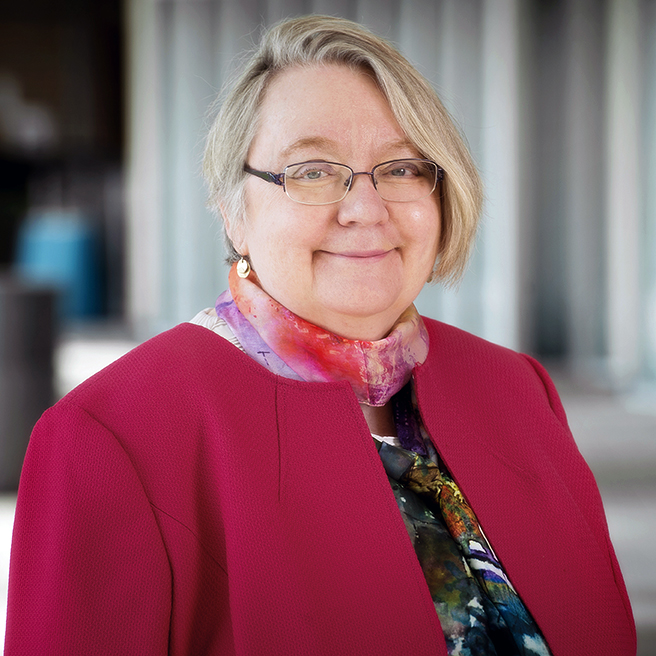 “The future is so bright for our campus libraries, now more than ever. As we move into UAB’s next 50 years, UAB’s 21st-century libraries will play a crucial role in helping us continue our culture of excellence and innovation, as they always have.”
“The future is so bright for our campus libraries, now more than ever. As we move into UAB’s next 50 years, UAB’s 21st-century libraries will play a crucial role in helping us continue our culture of excellence and innovation, as they always have.”
— Pam Benoit, provost and senior vice president of Academic AffairsContinuing progress
During the next year, UAB will continue to invest in its libraries, from physical improvements to new leadership. Candidates for the position of dean of UAB Libraries interviewed and made presentations in early December; follow the process at uab.edu/humanresources/executivesearch as the committee seeks a dean of Libraries who will embody UAB’s shared values of excellence and achievement. UAB Libraries also will hire an associate dean for scholarly communication and copyright who will ensure UAB’s libraries stay modern and innovative.
UAB Libraries will continue to implement key aspects of its own strategic plan, including ongoing professional development and training opportunities for library staff, collaborating with the CTL to provide faculty-focused workshops, update available technologies and digital resources and continue to imbed librarians in academic and research units across campus.
To continue UAB’s mission to make its libraries central hubs for learning of all kinds, second-floor space in Sterne will be renovated for the CTL, the Office of Service Learning and Undergraduate Research, the Vulcan Materials Academic Success Center, Education Abroad and National and International Fellowships and Scholarships. This furthers UAB’s commitment to both the QEP and to Forging the Future, which promotes collaboration, community engagement and academic, professional and personal development for all Blazers. Sterne’s third floor also will undergo improvements; the university plans to replace the carpets, paint, relocate carrels and purchase new furniture for student study spaces.
“The future is so bright for our campus libraries, now more than ever,” Benoit said. “As we move into UAB’s next 50 years, UAB’s 21st-century libraries will play a crucial role in helping us continue our culture of excellence and innovation, as they always have.”